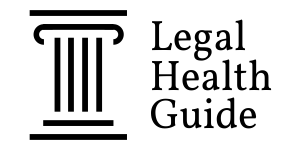A medical unfit certificate is a formal document that says someone can’t work or do regular activities due to health problems. Doctors and other qualified health professionals write these certificates to provide official proof of a person’s medical condition.
Writing a medical unfit certificate means including patient details, medical findings, the period of unfitness, and your professional signature as the certifying doctor.

These certificates serve important purposes in healthcare and work settings. Medical certificates are written statements from doctors that confirm a patient’s health status and recommend things like time off work.
You might need to write one when your patient has an illness, injury, or medical condition that keeps them from working safely. The process involves examining your patient and documenting their condition clearly.
Writing medical certificates requires precision, accuracy, and adherence to professional standards so the document serves its legal and medical purposes. Understanding the proper format and required elements helps you create effective certificates that protect your patients and their employers.
Key Takeaways
- Medical unfit certificates need patient info, medical findings, unfitness period, and doctor’s signature
- You should examine the patient thoroughly and document their condition accurately before writing the certificate
- Using proper templates and standards makes sure your certificates meet legal and workplace requirements
What Is a Medical Unfit Certificate?

A medical unfit certificate is an official document that says you can’t work or do regular duties because of health problems. This document acts as legal proof for employers and helps protect both your job and health while you recover.
Definition and Purpose
A medical unfit certificate is a written statement from a doctor that confirms you can’t work due to illness or injury. The certificate provides official proof of your health condition to employers, schools, or other organizations.
The main purpose is to protect your employment rights when you need time off for health reasons. Your employer gets proof that your absence is medically necessary.
Medical certificates for leave validate short-term or extended absences from work or study. They help prevent disputes about sick leave and make sure you get proper benefits.
The certificate also protects your employer by providing documentation for payroll and insurance purposes. This creates a record of why you were absent from work.
Legal and Ethical Considerations
Doctors have to follow strict rules when writing medical certificates. The Medical Board expects practitioners to ensure all information is honest and accurate.
Key legal requirements:
- Truthful information: All details must be accurate and not misleading
- Proper verification: Doctors must verify medical facts before signing
- Timely preparation: Certificates should be prepared quickly after examination
- Scope limits: Doctors cannot give opinions outside their expertise
Your privacy matters in this process. Doctors can’t reveal your diagnosis without consent unless required for workplace safety.
Doctors should avoid issuing certificates in certain situations. These include when there’s not enough medical evidence or when treating close friends and family members.
Common Situations Requiring Medical Unfit Certificates
You might need a medical unfit certificate in several work-related situations. Mental health conditions like stress, anxiety, or depression may require time off work for proper treatment.
Physical injuries from accidents or workplace incidents often need certification. This includes broken bones, back injuries, or anything that limits your ability to do your job.
Chronic illnesses such as diabetes, heart conditions, or autoimmune disorders may require ongoing medical leave. These conditions sometimes need periodic certificates for longer absences.
Recovery from surgery usually requires medical certification. The certificate states how long you need to recover and any work restrictions when you return.
Infectious diseases that could spread to coworkers also need certification. This protects you and your workplace from health risks.
Pregnancy complications may require medical leave beyond standard maternity time. Templates exist specifically for certifying inability to work due to illness or injury.
Essential Elements of a Medical Unfit Certificate

A well-crafted medical certificate needs certain components to be valid and legally acceptable. These elements help the document serve its purpose while meeting professional and regulatory standards.
Patient Information Required
Include complete patient identification details at the top of the certificate. This info prevents confusion and makes sure the document applies to the right person.
Required patient details:
- Full legal name as on official documents
- Date of birth
- Complete residential address
- Contact phone number
The patient’s name should match their employment or school records exactly. Any differences can cause delays or rejection of the certificate.
Check this information directly with the patient during the exam. Double-check spelling and numbers before finishing the document.
Details of Medical Condition
Give enough medical information to justify the unfitness determination. The amount of detail depends on the certificate’s purpose and the recipient.
Essential medical details:
- Primary diagnosis or medical condition
- Symptoms that prevent normal activities
- Treatment being provided
- Any restrictions or limitations
Use clear, professional medical terms but avoid going overboard with jargon. Patient consent is required before sharing specific diagnoses in work situations.
Include only information relevant to the unfitness claim. Leave out unrelated health issues or personal medical history that doesn’t matter for this situation.
The medical condition must connect directly to the patient’s inability to do their normal duties or activities.
Duration of Unfitness
State exact dates for the period of unfitness so employers and institutions can plan. Vague timeframes cause confusion and may not meet requirements.
Include these timeframe elements:
- Start date of unfitness
- Expected end date or review date
- Total number of days if needed
- Any staged return recommendations
Write dates clearly, like “January 15, 2025.” If the duration is uncertain, say when a follow-up will happen.
Only certify periods you can medically justify based on the condition and expected recovery time. Don’t extend dates beyond what you know or what the patient actually needs.
Physician’s Credentials and Signature
Include your professional credentials and contact info to validate the certificate. This lets others check your qualifications and licensing status.
Required physician information:
- Full name and medical qualifications
- Medical license number
- Practice name and address
- Contact phone and email
- Date of certificate issuance
Sign your name by hand in ink after printing the certificate. Some places don’t accept electronic signatures.
Include your medical registration number as your local board requires. This lets authorities check your credentials and right to issue certificates.
The certificate isn’t valid without proper physician identification and signature.
Step-by-Step Process to Write a Medical Unfit Certificate

Writing a medical unfit certificate means you need to check patient records, document medical findings clearly, and include specific details about work limitations. Stick to proper medical documentation standards and make sure the certificate has all legally required information.
Reviewing Patient History
Start by gathering the patient’s medical records. Look at their current symptoms, past diagnoses, and any ongoing treatments.
Check recent test results, imaging, and specialist reports. Review medication lists to see what treatments the patient is using.
Key areas to examine:
- Current symptoms and severity
- Duration of the medical condition
- Previous sick leave
- Work-related health factors
- Treatment response and prognosis
Document any functional limitations you notice during the physical exam. Watch for mobility issues, cognitive problems, or anything else that would affect work.
Think about how the patient’s condition impacts their job. A desk worker with back pain faces different challenges than a construction worker with the same issue.
Drafting the Certificate
Begin with standard medical certificate formatting, including your name, credentials, and registration number. Add the patient’s full name and date of birth.
Write the diagnosis in clear medical terms. Include both the main condition and any complications.
Specify the date you examined the patient and when their unfitness for work began.
Essential certificate elements:
- Patient identification details
- Clear medical diagnosis
- Examination date
- Start date of work unfitness
- Expected duration of absence
- Any work restrictions or modifications
Use precise language to describe the patient’s limitations. Avoid vague terms like “stress” or “fatigue.” Instead, write things like “major depressive episode” or “chronic lower back pain with radiculopathy.”
Add your medical license number and official signature. Date the certificate on the day you issue it, which might not be the examination date.
Highlighting Key Medical Reasons
Stick to the specific medical reasons that make the patient unable to work. Connect the diagnosis directly to impairments affecting work.
Explain how symptoms stop normal work activities. For example, severe vertigo makes operating machinery unsafe, or chronic pain limits lifting and standing.
Common medical reasons for work unfitness:
- Safety risks to patient or coworkers
- Physical limitations affecting job tasks
- Cognitive impairments hurting decision-making
- Recovery time after surgery or treatment
- Contagious conditions needing isolation
Be clear about workplace hazards the condition creates. Mental health conditions might affect concentration for detailed work. Physical injuries could make certain movements risky.
Justify the recommended time off work based on typical recovery for the condition. Reference treatment plans that require rest or limit activities.
Mention if the patient needs workplace accommodations or modifications after returning. Some conditions allow partial work with restrictions instead of full absence.
Best Practices for Writing Medical Unfit Certificates

Writing accurate medical unfit certificates takes attention to professional standards, patient privacy, and precise documentation. These habits keep things legal and maintain trust between providers and patients.
Maintaining Professional Language
Your certificate should use clear, professional medical terms that describe the patient’s condition. Avoid vague language like “not feeling well.”
Use specific terms when you can. Write “acute gastroenteritis” instead of “stomach bug.” This helps employers and institutions understand the seriousness.
Keep your tone formal and objective. Professional medical certificates need neutral language focused on facts, not personal opinions.
Structure sentences so they’re clear and concise. Each statement should give essential info without extra complexity.
Key language elements to include:
- Specific diagnosis or condition
- Duration of unfitness
- Functional limitations
- Medical recommendations
Skip emotional language or subjective assessments. Your certificate should read like a medical document, not a personal letter.
Ensuring Confidentiality
Patient privacy always comes first when you write medical certificates. Only share details that support the claim of unfitness.
Get written consent from the patient before you mention any specific diagnoses. Privacy considerations in medical certificates demand careful handling of sensitive health details.
Address the certificate to a specific person or department. Avoid the generic “To Whom It May Concern” to keep the document from being misused.
Information to protect:
- Detailed treatment plans
- Unrelated medical conditions
- Personal family information
- Sensitive diagnostic details
Stick to general terms if you don’t need to state the exact diagnosis. Sometimes “medical condition requiring rest” works better than naming the issue.
Store all certificates securely and follow HIPAA rules. For digital files, use encrypted storage and safe transmission.
Avoiding Common Mistakes
Don’t issue certificates for conditions you haven’t seen or treated yourself. Medical certificate guidelines stress the need for direct patient care.
Never backdate unless you can prove the date of the original examination. Falsifying dates can get you into serious trouble.
Avoid writing certificates for family or close friends. This can cloud your professional judgment.
Common errors to prevent:
- Missing essential patient information
- Unclear duration of unfitness
- Inadequate medical justification
- Improper addressing
Double-check all names, dates, and medical facts before you sign. Mistakes can make the certificate useless and cause headaches for your patient.
Make sure your license number and contact info are up to date and easy to find on every certificate.
Templates and Sample Formats

Using a reliable template saves time and helps you include everything needed for a medical unfit certificate. Each situation might need a few tweaks to meet legal and professional rules.
Standard Medical Unfit Certificate Template
A basic medical certificate template covers all the must-have fields. Start with your medical practice letterhead and contact details.
Required Template Elements:
- Patient’s full name and date of birth
- Medical condition or diagnosis
- Duration of unfitness for work
- Date of examination
- Your signature and medical license number
In the body, write: “This is to certify that [Patient Name] has been examined and found medically unfit for work from [Start Date] to [End Date] due to [Medical Condition].”
Add a section for work restrictions, like “complete rest required” or “light duties only.” Leave space for the exam date and your professional stamp.
Plenty of downloadable certificate formats use the right legal language. Pick one that matches your local board’s requirements.
Customizing for Various Scenarios
Different jobs mean different certificate needs. Construction workers usually need more details about physical limits than office staff. Adjust your template for each case.
Common Customization Areas:
- Physical work: List any lifting limits, standing restrictions, or mobility issues
- Mental health: Mention stress, trouble concentrating, or anxiety symptoms
- Infectious diseases: Note isolation periods and return-to-work rules
- Surgery recovery: Specify wound care or activity limits
Specialized medical templates help you cover different scenarios. Keep separate templates for things like short-term illness, chronic conditions, or workplace injuries.
Add checkboxes for common restrictions. This makes writing certificates faster and more thorough.
Submission and Use of Medical Unfit Certificates

Submit medical unfit certificates to the right people and make sure they’re validated. Organizations have their own rules about who can ask for these documents and how they check if they’re real.
Who Can Request and Accept Certificates
Employers can ask for a medical certificate when you call in sick or need extra time off. Most companies want one if you’re out for more than three days.
Authorized Recipients Include:
- Human resources departments
- Direct supervisors or managers
- Insurance companies handling claims
- Schools or colleges for student absences
- Courts for legal matters
Don’t submit certificates to people who aren’t authorized. Your doctor should address it to whoever needs it, not just “To whom it may concern.”
Insurance companies often need certificates for disability or leave claims. Sometimes they have their own forms for your doctor.
Government agencies like workers’ comp boards use these certificates to process claims and decide on benefits.
Validating and Authenticating Documents
Recipients have to check if your certificate comes from a licensed medical professional. They usually look up the doctor’s name, license number, and contact info.
Common Validation Steps:
- Confirming doctor’s license status
- Verifying clinic or hospital details
- Checking certificate format and required info
- Contacting the doctor if needed
Your certificate needs certain details to count. That means your info, the doctor’s credentials, and official letterhead or stamp.
Organizations might reject certificates that aren’t formatted right or are missing info. Some employers only accept certificates from specific kinds of providers.
Digital certificates are becoming more popular and often have security features. These can include codes or electronic signatures that are easy to check online.
Frequently Asked Questions

Doctors have plenty of questions about what to include and how to issue unfit certificates. These documents need to be precise and follow legal rules.
What information is required to be included in a medical unfit certificate?
A valid medical unfit certificate has to list specific patient information and medical details. Start with the patient’s full name, date of birth, and address.
Include the medical condition or diagnosis that makes the patient unfit. State the leave period with clear start and end dates.
Add your full physician information, including name, qualifications, and license number. List your clinic or hospital name, address, and contact details.
Sign and date the certificate. Don’t use phrases like “general illness.” Be as specific as privacy rules allow.
Can you guide me through the process for issuing a medical unfit certificate?
First, examine the patient thoroughly. Make sure to document symptoms and findings.
Check that the patient’s condition really needs time off or restricted work. Only issue certificates when you have enough evidence to support your claim.
Use a standard template. Fill in all fields with accurate info.
Review the certificate before signing. Double-check dates, terms, and patient details.
Give the certificate to the patient soon after the visit. Keep a copy in your records.
Which medical conditions typically necessitate the issuance of an unfit certificate?
Severe flu, pneumonia, or gastroenteritis often mean time off work. These illnesses can really hit performance and spread easily.
Surgery and recovery periods usually need certificates too. Rest and limited activity are key for healing.
Mental health issues like severe depression or anxiety might call for temporary work restrictions. These can seriously affect safety and job performance.
Injuries that reduce mobility, like fractures or sprains, often require time off or lighter duties.
Chronic conditions can flare up and need temporary work changes. Think arthritis, diabetes complications, or heart problems.
What is the legal duration for which a medical unfit certificate is valid?
Medical certificates have set validity periods based on the illness and local rules. Acute illnesses usually mean days to weeks off.
Surgical recovery might need weeks or months. The time should fit the expected recovery.
Chronic conditions often get shorter certificates with regular reviews. That way, you can reassess as needed.
Check your area’s guidelines for maximum durations. Some places cap certificates at a certain length.
Issue follow-up certificates if the condition lasts longer than expected. Don’t give long certificates without a solid reason.
Are there any specific formatting guidelines for a medical unfit certificate?
Use a header like “Medical Certificate” or “Certificate of Medical Unfitness.” Skip generic addressing like “To Whom It May Concern” to avoid misuse.
Address the certificate to the right person or group. Use “Dear Employer” or “Dear Court” if needed.
Lay out the info in a clear order with good spacing and readable fonts. Keep it professional but not stiff.
Include all the required parts in a logical order. Patient info first, then medical details, then your info.
Make sure the certificate looks clean and easy to read. Messy formatting can make people question if it’s legit.
Who is authorized to issue a medical unfit certificate?
Licensed medical doctors usually issue unfit certificates. Your license must be current and valid in your area.
Some nurse practitioners and physician assistants can issue certificates too. Their authority depends on local regulations.
Specialists handle certificates for conditions in their field. General practitioners cover more common medical issues.
Avoid issuing certificates outside your professional expertise or scope of practice. If you’re unsure, send patients to the right specialist.
Don’t issue certificates for yourself, family, or friends. That’s a conflict of interest and raises ethical concerns.









